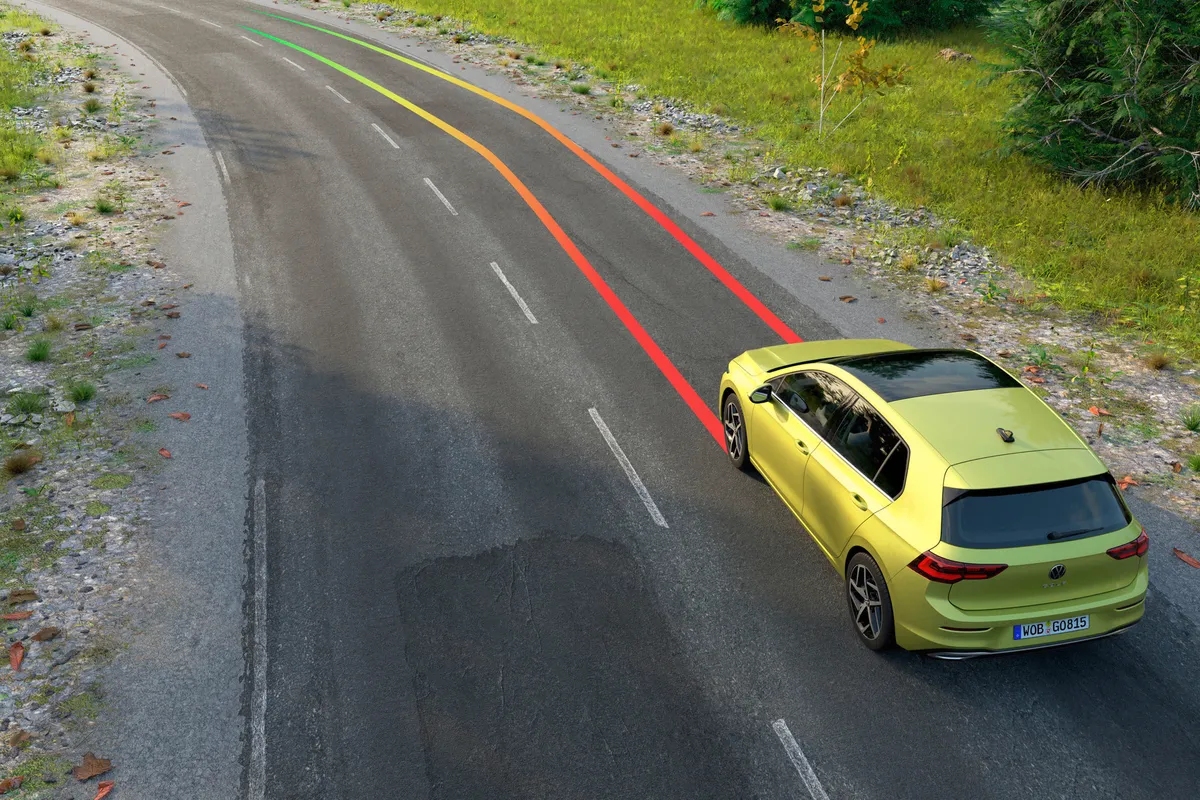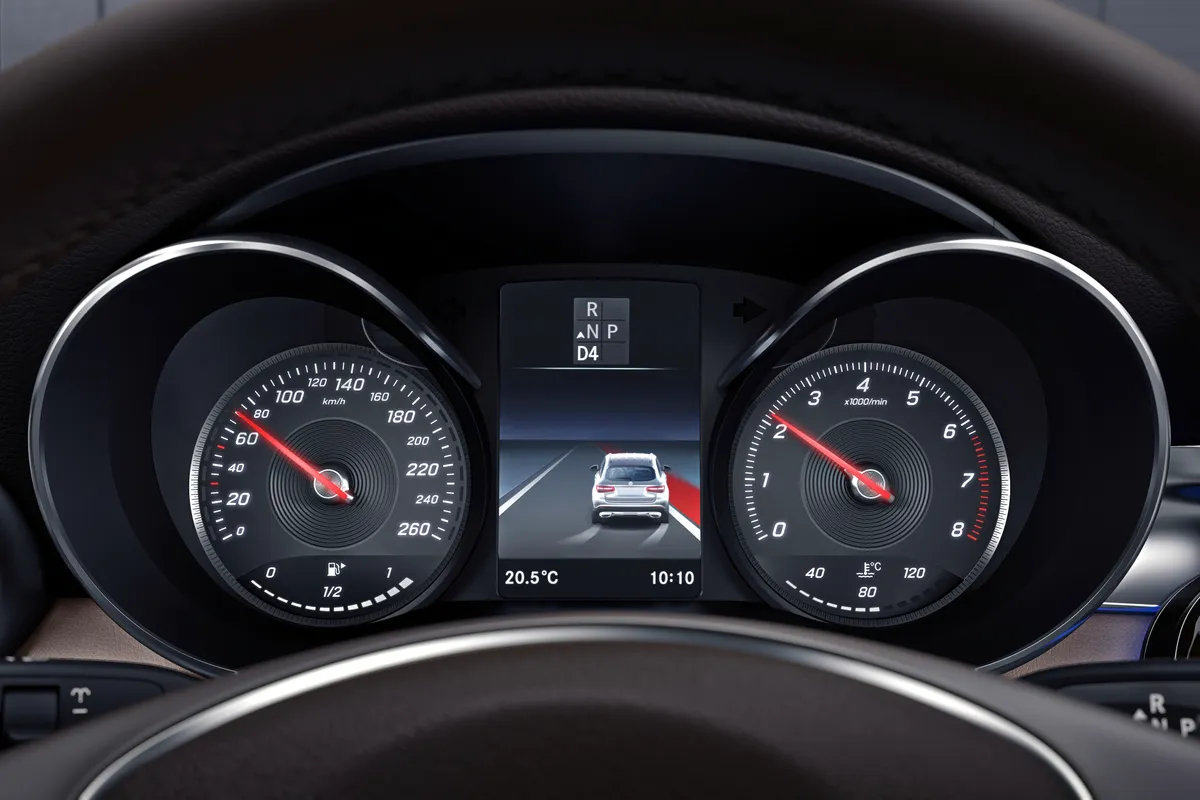Picture the scene: you’re driving along a rural A-road and spot a cyclist up ahead. As a fellow rider and courteous driver, you’re lining up for a safe overtake, edging out to the middle of the road to improve your sightline and maintain a suitably safe distance as you pass.
The car, however, has other ideas. Lane-keeping assistance designed to stop dozy drivers weaving out of their lanes on motorways ‘reads’ proximity to the white line, the wheel moves of its own accord in your hands and, all of a sudden, the car has steered itself onto a collision course with the unsuspecting rider, forcing a counter-correction of your own while the car scolds you with buzzers and warning lights in an unseemly wrestle for control between driver and black boxes.
This is exactly what happened to me in a new hatchback I was testing in my day job as a motoring journalist. A Tweet on the experience got over 130,000 views and, predictably, inspired some pretty punchy comments from those on both sides of the ‘us and them’ mentality portraying cyclists and drivers as combatants locked in mortal combat for the same precious road space.
We all know this is rubbish and, more often than not, ‘cyclists’ and ‘drivers’ are one and the same on different days in the week. Indeed, many of my riding buddies are just as passionate about cars as they are bikes and a significant number of the journalists, execs and engineers I meet in the automotive world are mad keen cyclists, to the point where after-dinner chat on launch events often turns to the shared love of pedal power as much as horsepower.
Quite clearly these folk are not deliberately developing safety technology that could improve outcomes for drivers at the expense of vulnerable road users. But based on my experiences on two wheels and four I have wondered whether a close-pass situation could become an actual collision as the unintended consequence of an automated steering intervention from one of these systems.
What is lane-keeping assist?
Nearly all modern cars – even basic superminis – now use a combination of cameras and sensors to monitor their surroundings and trigger automated responses with the aim of preventing or mitigating collisions with pedestrians, cyclists and other vehicles.
They vary in complexity but, put simply, most will slam on the brakes if the driver doesn’t respond to hazards in their path in urban driving situations, or use automated steering interventions to keep the car in its lane on the motorway.
It’s well-intentioned, enabled by recent strides in technology and mandated by the all-important safety regulations manufacturers and car buyers both live by. Few would question the motivation of helping avoid accidents and save lives in the process.
Spoiler alert: the problem is still bad driving
Rewind to the scenario I described in my introduction. Even with that unexpected automated steering intervention, a considerate driver would have the time and space to easily override the system and maintain a safe distance.
But we know not all drivers are so considerate. And extrapolating how dramatically these lane assist systems can change a car’s direction of travel to real-world situations all of us on two wheels will have experienced has me worried someone not leaving enough margin, not ready for the automated intervention or just too slow to counteract it could make the difference between a tap on the backside from a wing mirror and something much more serious.
The problem is that roads are fiendishly complicated environments, with variables no sensor or camera can fully account for.

In my job reviewing new cars, I explore and sometimes ‘provoke’ these systems to see how they work.
Rest assured, this doesn’t extend to driving at people on zebra crossings to make sure the automated pedestrian braking system operates as advertised, but if there’s a safe, controlled way to contrive a response, I’ll try it.
And, as happened in a car I was testing the other week, on A-roads like the ones many of us ride on, it wasn’t hard to get a reaction from the lane-keeping assistance that could, seemingly, steer the car off the road. Or into whoever was between it and the verge.
Is it alarmist of me to imagine a situation where an inattentive driver, perhaps unaware their car has this tech, could be nudged into a close pass by the black boxes?
Yes, according to a pal who both rides bikes and has many years under his belt as an automotive software engineer. (Given the nature of his job, he prefers to stay anonymous.)
“Nobody likes to be told how to drive, and a machine doing it is probably even worse than another human,” he says. “It’s very easy after having experienced a Driver Assist and Augmentation System (DAAS) intervention where there was no actual crash to start criticising the ‘tech’ for jumping in. I mean, you had that under control right, didn’t you…”
His point is that these systems are simply tools. “Lane Assist is, just like us, fallible,” he says. “In order to react soon enough to be able to prevent or at least mitigate against a genuine accident it must be a bit heavy-handed occasionally. It is also worth noting that Lane Assist is deliberately calibrated to shock the driver when it cuts in, but to be easily overridden if they consider its actions to be inappropriate.”

Flicking the indicator to announce your intention to overtake is enough to cancel any lane-keeping intervention, and indeed many more of the more heated responses in my original Twitter thread were from those who assumed I was some sort of wannabe racing driver for attempting a pass while still inside the white lines. But this doesn’t account for the kind of real-world situations we encounter every day as both riders and drivers.
“There are many occasions when you might legitimately cross the centre line without considering a signal,” says former police instructor Reg Local, now a published author and YouTube sage on all matters advanced driving.
“Cyclists don’t often have mirrors and check their shoulders very infrequently, so a signal is not always necessary. It is just a piece of information for other road users and, if no-one is there to benefit, it’s a bit like talking to yourself. In all honesty, it’s pretty rare for me to signal to pass a cyclist.”
Correct observation and anticipation are much more important, in his view. “My rule of thumb for [overtaking] cyclists is 'plan to follow, look to pass',” he says. “Most drivers approach cyclists with those plans in the wrong order. They plan to pass and then, often at the last minute, have to brake hard and end up close to the rear of the cyclist because of oncoming vehicles.”
As for lane-keeping systems? “You can always overcome them with a firm tug on the wheel but the sensation of the car resisting your inputs just as you’re about to pass a very vulnerable road user is at least disconcerting, and at worst quite scary,” he says.
The robot overlords are improving
The good news? The tech is getting smarter, with Volvo introducing a system that uses steering interventions the other way if the driver looks to be on course for a ‘close pass’ situation.
“It is helpful to reflect on what we’re trying to achieve with the systems if you’re in a situation where you’re a motorist catching up with a bicycle,” says Mikael Ljung Aust, senior technical leader at the Volvo Cars Safety Centre.
“Here, we make two assumptions. The first is that you do not want to hit cyclists. The second, and equally important, is that you do not want to enter an adjacent or opposing lane unintentionally,” he says. “Within these boundary conditions, it’s actually quite accurate to describe what we do as nudging.”

But how does the system decide which way to go if, for instance, steering around a cyclist puts the driver into a collision course with an oncoming vehicle in the opposite lane?
“The first nudge would be steering away from the cyclist if the lateral margin seems too tight,” he says. “However, as we don’t want the driver to unintentionally enter a potentially occupied adjacent lane, there will be a second nudge when you’re about to go across the lane markers. In both instances, and this is key here, the main purpose really is to bring the driver’s mind back on the driving task.”
My own experiences, and those of the three experts quoted above, prove that neither people nor technology are infallible and that driving is more nuanced and complicated than many credit.
We shouldn't be rose-tinted about the days before assistance systems were commonplace, given that poor drivers were perfectly capable of lethal mistakes without any supposed computer-driven intervention.
In all areas of life, tech is, after all, only ever as good as the people using it and, if you own a vehicle equipped with technology such as lane-keeping, it could be argued you have a responsibility to ensure you understand how it works and when it might activate.
As my engineer friend tactfully points out, if your driving is triggering automated interventions on a regular basis, the issue is most likely the driver, not the black boxes.
Of course, lane-keeping technology is, by its nature, in the background – until it isn’t. It’s effectively compulsory on new vehicles and is switched on by default. Non-tech-savvy drivers might very well not even realise they have it, until the moment it kicks in.

Please don't drive like an idiot
So, does this change anything for us when we’re out on the road on our bikes? Probably not, given ultimate control over a vehicle’s path remains with the driver.
In an ideal world, all drivers would pay attention all the time but since they, unfortunately, don’t, making yourself visible to them through clothing choice, lighting and road position remains as important as ever.
That, of course, is not to absolve motorists – or any road user – of responsibility for using the roads safely, but to understand the inherent vulnerability of cyclists in traffic and the faith we’re putting in those around us.
The ‘assistance’ systems in modern cars aren’t necessarily going to make inattentive drivers any safer to be around and it remains an open question as to whether there are specific circumstances where they could make them more dangerous.
It does however seem that lane-keeping assist isn’t going to turn well-meaning drivers into inadvertent menaces and make ‘Sorry mate, it was the car’ the SMIDSY (“sorry mate, I didn’t see you”) for the tech age.
Lane-keeping tech is well-intentioned, but it’s not able to read every real-world situation and, ultimately, the onus remains on the motorist to drive safely and share the road with other users.
